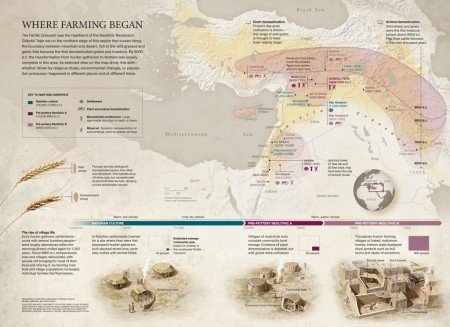- Spinifex fibres for ultra-thin condoms, with indigenous approval.
- Piper borbonense getting its 15 minutes.
- Cook Islands shares taros with Samoa. Fingers crossed they’re TLB resistant.
- A couple of videos you may only be able to get on Facebook, or at least I can’t find other sources: Ethiopian coffee ceremony, and INRA/CIRAD’s banana and yam collections in Guadeloupe.
- Speaking of coffee, drink it while you can. And yes, it’s China’s fault.
- The cucumber in England through the ages.
- Gourmet maize in Oaxaca right now.
- All kinds of gourmet food in Peru right now too.
- Ok, ok, a Filipina chef on gourmet heirloom rice too.
Nibbles: Solutions edition
- No new salinity tolerance in cereals? You need to look at the right thing.
- No new crops? Focus on plants’ sex lives.
- No hope for drylands? Look to biodiversity.
- No new agricultural land? No problem.
- No data on neglected Himalayan crops? Got you covered.
- No way you’re drinking coffee from civet droppings? Chemistry to the rescue.
- No place for the offspring of F1 hybrids in your agriculture? Go apomictic.
- No new fruits left to try? Hang in there.
- No diversity in your Aragonese homegarden? There’s a genebank for that.
- No impact for your agricultural research. Try clusters.
- No agroecological patterning to your crop’s genetic diversity? It’s the culture, stupid.
Brainfood: Lima bean cyanide, Hybrid powdery mildew, Amaranth core, Cotton core, Tibetan sheep, Water buffalo history
- Herbivore damage induces a transgenerational increase of cyanogenesis in wild lima bean (Phaseolus lunatus). Lamarck lives.
- Hybridization of powdery mildew strains gives rise to pathogens on novel agricultural crop species. Hybrid crop gives rise to hybrid pathogen.
- Trait-specific Amaranth Germplasm—Potentialities to Combat Climate Change. From 5,804 accessions to 623 really useful ones.
- Genetic diversity of the two commercial tetraploid cotton species in the Gossypium Diversity Reference Set. 100 SSRs on 2000 accessions yield really confusing results.
- Genetic diversity estimates point to immediate efforts for conserving the endangered Tibetan sheep of India. Only 250 individuals, but still some genetic diversity. But for how long?
- Water Buffalo Genomic Diversity and Post-Domestication Migration Routes. Two domestications, and some unexpected migration routes.
Nibbles: Gastronomy edition
- Gastronomy comes to the Amazon.
- Maybe it should come to Tikal too.
- You know it’s already in Mexico.
- Not to mention Peru.
- Preparing decent coffee counts as gastronomy, I guess. But SL28 is not genetically engineered. Not in the usual sense, anyway.
- Not sure that eels have much of a future in gastronomy.
- Into Africa: Indian seeds. And Indian gastronomy along with them?
- Feralization is not domestication in reverse. Lots of gastronomic potential, though.
- Meanwhile…
Mapping the Neolithic Revolution
Somehow we missed this great map of the Fertile Crescent from National Geographic. It came out just before Christmas, but we should have caught it, really. I hope they do similar ones for other cradles of agriculture around the world.
